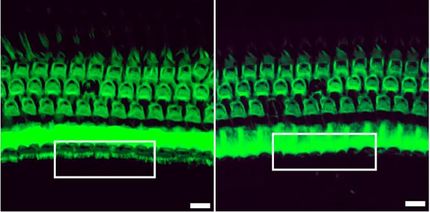Melanoma transcriptome reveals novel genomic alterations not seen before
In a study published online in Genome Research, scientists have delved deeper than ever before into the RNA world of the melanoma tumor and identified genomic alterations that could play a role in the disease. The latest high-throughput DNA sequencing technologies are ushering in a new era of discovery in cancer genomics that promises to reveal molecular mechanisms of the disease. Beyond cataloging the genetic mutations present in tumors, application of high-throughput sequencing to the RNA “transcriptome” can uncover other genomic alterations missed by DNA sequencing and identify potential targets for therapy.
For example, two adjacent genes can be transcribed together in a single “chimeric” RNA transcript. This RNA message is then translated into a protein with an altered or new function. In addition, rearrangements of the genome can cut and paste genes together, creating “gene fusions.” These events occur in normal cells, but they also have the potential to cause disease. Recently these alterations have been detected a few tumor types, and it is very likely that more will be found in other cancers such as melanoma.
To capture the full spectrum of genomic alterations present in the expressed genes of melanoma, a team of researchers in the United States and Switzerland performed an integrative analysis of melanoma tumors using RNA sequencing and structural genomic data. The group identified 11 novel gene fusions involving several common cancer-related genes, and 12 cases of chimeric transcripts. “This is the first direct evidence for these types of genetic alterations in melanoma,” said Michael Berger, a research scientist at the Broad Institute and first author of the report.
A particularly interesting finding was that a recurrent chimeric transcript was found involving the CDK2 gene, known to be required for melanoma cell proliferation. The authors suggest that the functional role of the aberrant CDK2 transcript is an attractive target of future investigation. In addition to novel gene fusions and chimeric transcripts, the research group also identified many other alterations in the melanoma tumors, including novel mutations, alternative splice variants, and expression changes.
Berger noted that this type of cancer transcriptome analysis is very appealing, as it complements common DNA-based genomic sequencing and characterization approaches to capture a more complete picture of the cancer genome. “Such studies should help reveal the cancer RNA world,” added Levi Garraway, an Assistant Professor at Harvard Medical School/Dana-Farber Cancer Institute and the study’s senior author, “thereby nominating many new genetic targets relevant to tumor biology and drug discovery.”
Original publication: Berger MF, Levin JZ, Vijayendran K, Sivachenko A, Adiconis X, Maguire J, Johnson LA, Robinson J, Verhaak RG, Sougnez C, Onofrio RC, Ziagura L, Cibulskis K, Laine E, Barretina J, Winckler W, Fisher DE, Getz G, Meyerson M, Jaffe DB, Gabriel SB, Lander ES, Dummer R, Gnirke A, Nusbaum C, Garraway LA.; "Integrative analysis of the melanoma transcriptome."; Genome Res 2010.
Most read news
Other news from the department science

Get the life science industry in your inbox
By submitting this form you agree that LUMITOS AG will send you the newsletter(s) selected above by email. Your data will not be passed on to third parties. Your data will be stored and processed in accordance with our data protection regulations. LUMITOS may contact you by email for the purpose of advertising or market and opinion surveys. You can revoke your consent at any time without giving reasons to LUMITOS AG, Ernst-Augustin-Str. 2, 12489 Berlin, Germany or by e-mail at revoke@lumitos.com with effect for the future. In addition, each email contains a link to unsubscribe from the corresponding newsletter.





















































